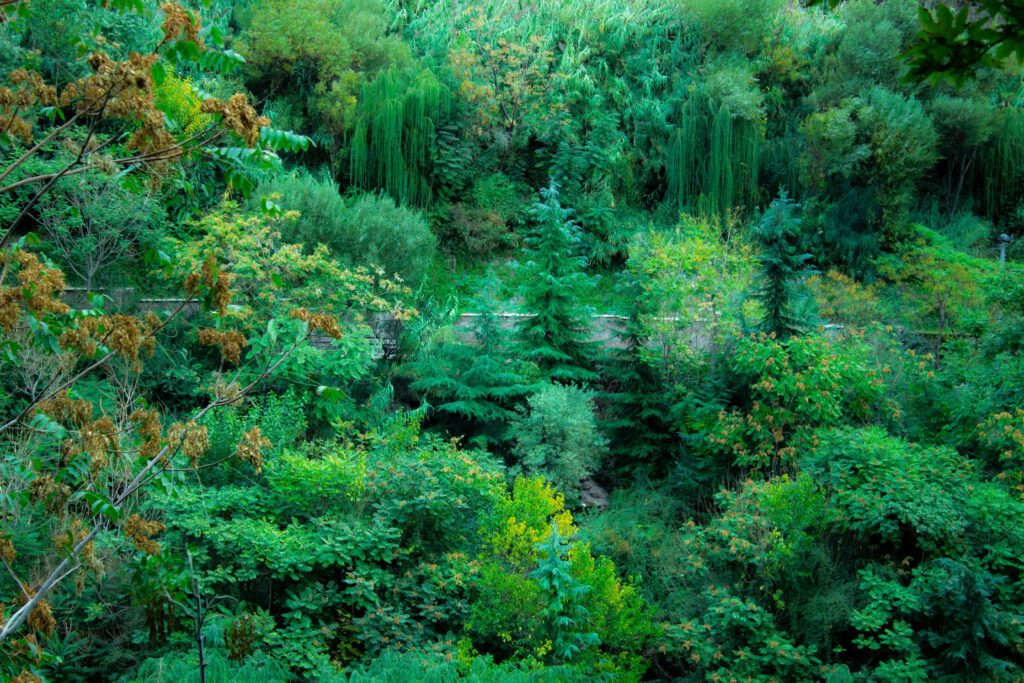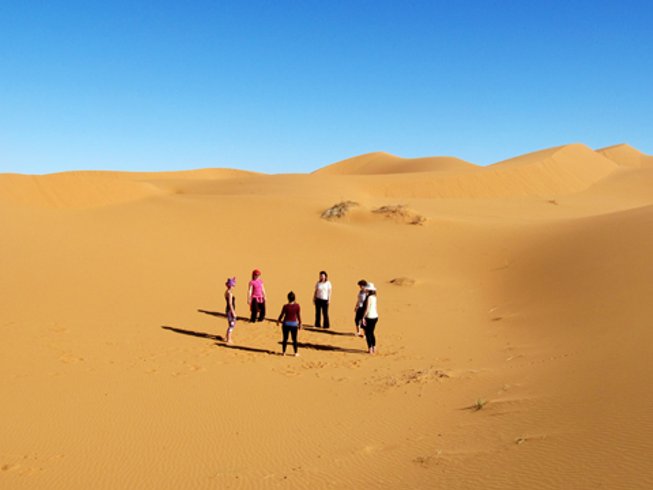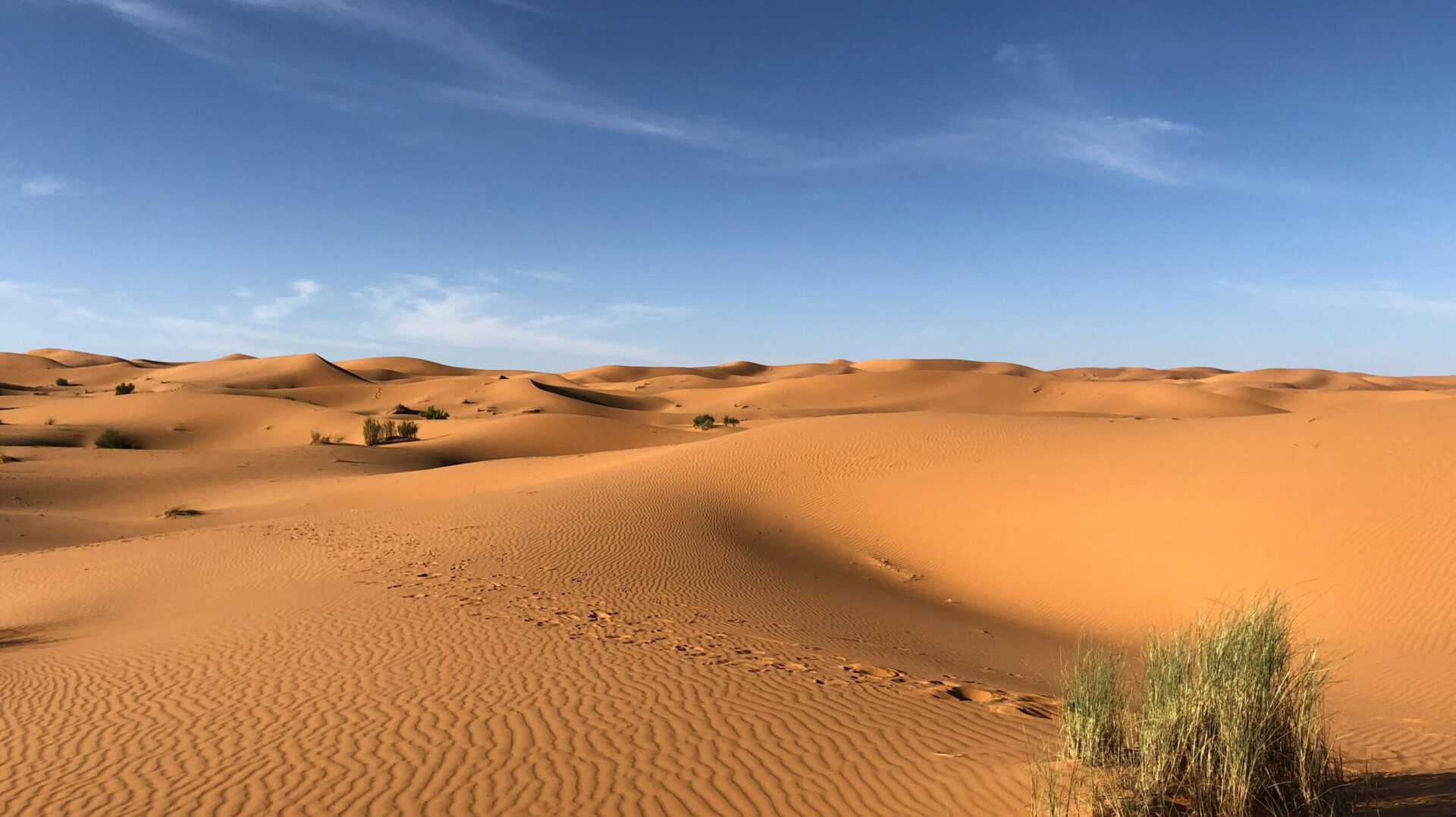What Does Sahara Mean?
The meaning of the word „Sahara“ is derived from the Arabic language: صَحَارَى, a plural form of ṣaḥrā‘ (صَحْرَاء /sˤaħraːʔ/), meaning „desert“ or „empty“. It also relates to the names Zahra, which means bright, brilliant, and beautiful; as well as to Zahrah, which means blossom or flower.
In the Aramaic and Ugaritic religion the name symbolises the Moon Goddess and the morning star (which in the Maya cosmovision is related to the planet Venus).
Since the Sahara stretches exactly across the zero meridian point „0“ of the earth that runs from North to South, the name could also be a reference to the unique position on the planet: zero, the void, from which everything emerges.
What Type Of Deserts Are Part of the Sahara?
The Sahara desert has many subdivision that vary in size and geographical features. Erg Chebbi, for example, are the sand dunes in eastern Morocco at the border to Algeria. Erg means sand landscape or sand hills and describes the endless oceanic sand dunes present here.
The Ténéré is another well-known part of the desert, also know from this song from the Tinariwen. It’s spanning from northeastern Niger to Western Chad. The Nubian Desert is located between northeast Sudan and northern Eritrea, while the Libyan Desert stretches from the East of Libya all the way to the western desert of Egypt.
How Did The Sahara Desert Look Millions Of Years Ago?
From Lush Green To Dry And Hot
23 to 5.3 million years ago, the Sahara was once a lush and green jungle and partly covered by the ocean. Until this day you can find ocean fossils in certain areas of the Sahara, such as in the Erg Chebbi region of Morocco, as well as stone formations that look like giant mushrooms made of oceanic micro-organism, such as in the White Desert in Egypt.
There is a lot of speculation how the desert land could change so dramatically over the years. However, one of the reasons is a change in the desert monsoon and a change in the orbital configuration of the Earth by up to 22° over a span of 41.000 years.
This change in rain fall and solar radiation starts to slowly change the abundant and green savanna land and turns it into a hot and dry desert over time.
Hence, the change of the Sahara desert from lush green oasis to the vast ocean of sand dunes as we know it today, wasn’t an abrupt shift. It was a slow progression of climate change due to the tilt of the earth axis that turned the land more arid, which has been part of the historical changes on earth since the beginning of time.
Another theory states that there was a shift in the tectonic plates, too, that lead the land to emerge out of the water.

The Sahara Desert: Beginning To Now
The Sahara Monsoon: 11,000 To 5,000 Years Ago
Around 11,000 and 5,000 years ago, after the last ice age, the Sahara was a lush green area with a myriad of wildlife, such as gazelles and hippos. Due to increased solar radiation the monsoons intensified and the desert bloomed with green vegetation, rivers and lakes.
Archaeologists found out that there was significant human activity, too, in the Sahara region. Furthermore, due to the heavy rainfalls in monsoon season, a massive lake of over 108.000.000 square kilometers emerged in the Sahara.
Climate Change And The Return To The Sahara Dunes
Around 4200 BCE the heavy rainfalls started to shift southwards due to the earth’s tilt, and switched the wetlands into a drylands. Vast sand dunes now replaced the green savanna and the Sahara desert, as we know it today, emerged.
The Sahara Desert From Erg Chebbi To Nubia Today
Nowadays, the Sahara desert is an oncean of vast sand landscapes and extreme heat. Summers can see temperatures of up tp 50°C, while winters get as low as 0°C. Due to it’s unique location on the planet, the Sahara desert receives sparse rainfall and Morocco even had a dry period of six years, that was only broken by heavy rainsfalls last year in September 2024.
However, it is important to remember that the Sahara’s present desert is not a permanent condition. As the earth keeps rotating and shifting its axis, large cycles of wet and dry periods that span over thousands of years still remain part of this area.
How Will The Sahara Desert Look In The Future?
Due to seasonal changes caused by slight shift of the axis of the earth, scientists predict that the Sahara could go back to it’s origin from thousands of years ago: a green savanna land. However, this will most likely only occur in 10,000 to 11,000 years.
Until now, it’s unknown how human-made climate change will affect the large seasons of the desert. While it’s very likely that the Sahara will once again be a lush green jungle, the exact timing and phases for this transition are uncertain.
Want to join us for an unforgettable trip into the land of the Berber in the Sahara Desert, Erg Chebbi?
Check out our dance meditation retreats, and venture into the ancient culture and history of the Sahara desert, that once was an ocean. 🙂
Desert U Retreats – Morocco

